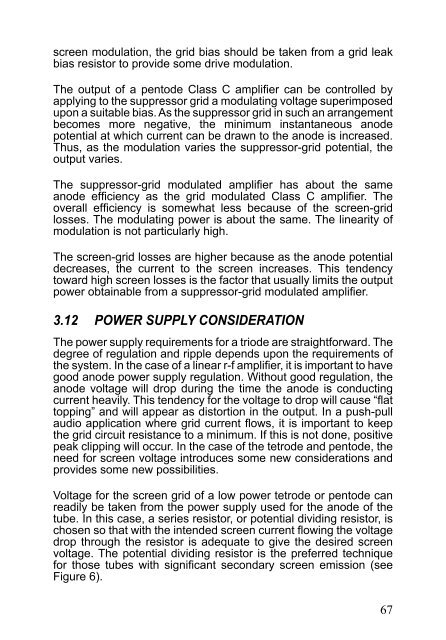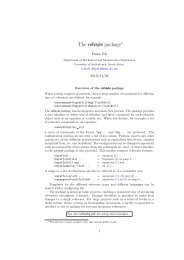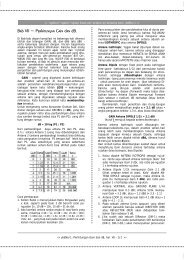You also want an ePaper? Increase the reach of your titles
YUMPU automatically turns print PDFs into web optimized ePapers that Google loves.
screen modulation, the grid bias should be taken from a grid leak<br />
bias resistor to provide some drive modulation.<br />
The output of a pentode Class C amplifier can be controlled by<br />
applying to the suppressor grid a modulating voltage superimposed<br />
upon a suitable bias. As the suppressor grid in such an arrangement<br />
becomes more negative, the minimum instantaneous anode<br />
potential at which current can be drawn to the anode is increased.<br />
Thus, as the modulation varies the suppressor-grid potential, the<br />
output varies.<br />
The suppressor-grid modulated amplifier has about the same<br />
anode efficiency as the grid modulated Class C amplifier. The<br />
overall efficiency is somewhat less because of the screen-grid<br />
losses. The modulating power is about the same. The linearity of<br />
modulation is not particularly high.<br />
The screen-grid losses are higher because as the anode potential<br />
decreases, the current to the screen increases. This tendency<br />
toward high screen losses is the factor that usually limits the output<br />
power obtainable from a suppressor-grid modulated amplifier.<br />
3.12 POWER SUPPLY CONSIDERATION<br />
The power supply requirements for a triode are straightforward. The<br />
degree of regulation and ripple depends upon the requirements of<br />
the system. In the case of a linear r-f amplifier, it is important to have<br />
good anode power supply regulation. Without good regulation, the<br />
anode voltage will drop during the time the anode is conducting<br />
current heavily. This tendency for the voltage to drop will cause “flat<br />
topping” and will appear as distortion in the output. In a push-pull<br />
audio application where grid current flows, it is important to keep<br />
the grid circuit resistance to a minimum. If this is not done, positive<br />
peak clipping will occur. In the case of the tetrode and pentode, the<br />
need for screen voltage introduces some new considerations and<br />
provides some new possibilities.<br />
Voltage for the screen grid of a low power tetrode or pentode can<br />
readily be taken from the power supply used for the anode of the<br />
tube. In this case, a series resistor, or potential dividing resistor, is<br />
chosen so that with the intended screen current flowing the voltage<br />
drop through the resistor is adequate to give the desired screen<br />
voltage. The potential dividing resistor is the preferred technique<br />
for those tubes with significant secondary screen emission (see<br />
Figure 6).<br />
67
















